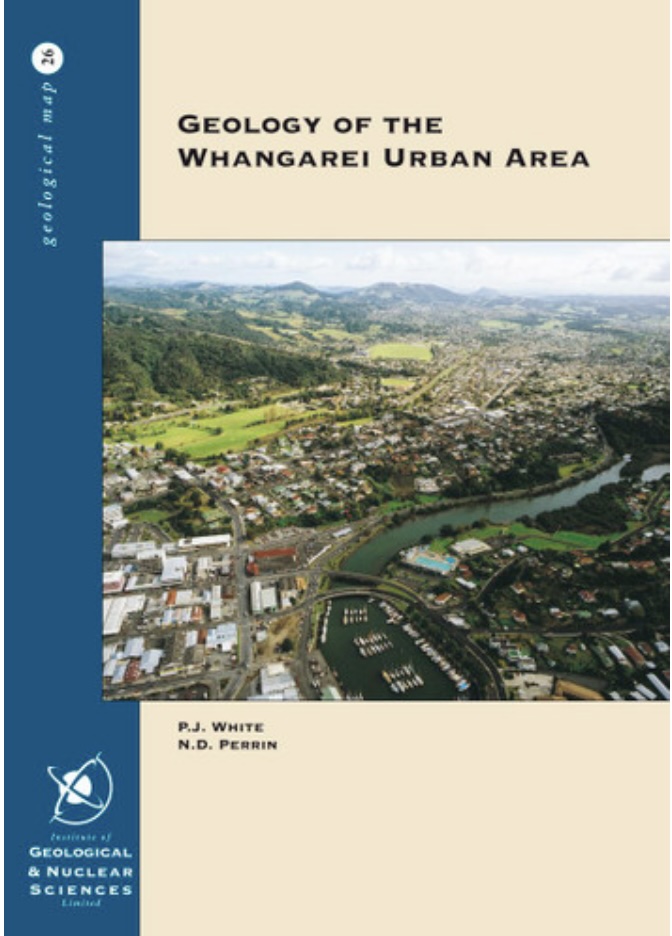
Geology of the Whangarei area
This geological map and accompanying text cover the geology of the Whangarei urban area, an area of 170 km2 which includes Whangarei City and suburbs, and some of the immediately surrounding land.
Approximately 30 km2 of the map area is covered by the upper reaches of Whangarei Harbour. Mesozoic Waipapa Terrane basement "greywacke" is exposed in fault blocks to the east and west of the city. It is overlain by Late Eocene to Early Miocene coal measures and marine sediments of the Te Kuiti Group. These are overthrust by the Northland Allochthon, which in this area comprises sheared mudstones, sandstones, and muddy limestones of the Motatau Complex, and mudstones of the Mangakahia Complex. These rocks are intruded and overlain by Parahaki rhyolite dome (Coromandel Group), which erupted in the Early Miocene, and the younger (Pliocene and Pleistocene) basaltic to intermediate lava flows and scoria cones of the Puhipuhi-Whangarei Volcanic Field (Kerikeri Volcanic Group). Parakiore dacite dome is probably of Pleistocene ages and is included in the Kerikeri Volcanic Group. Fluvial and lacustrine gravel, sand and mud occur both above and below the Kerikeri Volcanic Group and in many areas were deposited where streams were dammed by lava flows.
Many low-lying areas surrounding Whangarei Harbour are covered by recent man-made fill. Two major fault sets trend roughly east-west and NNW-SSE. These faults were active immediately after deposition of the Te Kuiti Group and emplacement of the Northland Allochthon. None are known to have moved since the Early Miocene.
Underground mining in Kamo Coalfield from 1865 to 1955 produced some 1.6 million tonnes of coal. Considerable reserves remain, but are unlikely to be mined unless dewatering difficulties can be overcome.
Rock for aggregate and fill is extracted from several quarries in Waipapa Terrane greywacke and scoria is taken from Hurupaki scoria cone. Mahurangi limestone is quarried for use in cement manufacture. Clay has been extracted from Kamo Coal Measures, and altered rhyolite and dacite from Parahaki and Parakiore domes, for use in brickmaking and pottery.
Groundwater occurs in considerable quantities within scoria and lava flows of the Puhipuhi-Whangarei Volcanic Field, and in Whangarei Limestone, though in some places this is CO2-rich soda water. Various geological hazards exist in the area.
Earthquake risk in Northland is slight but real, and must not be ignored. The Puhipuhi-Whangarei Volcanic Field cannot be considered to be extinct, although the return period of eruptions is relatively long (about 100 000 years). Slumping may place some constraints on urban development and is a particular problem within sheared, clay-rich rocks of the Northland Allochthon. Parts of Kamo which overlie areas of shallow underground mining have been, and will continue to be, affected by crown-hole subsidence.
$49.90